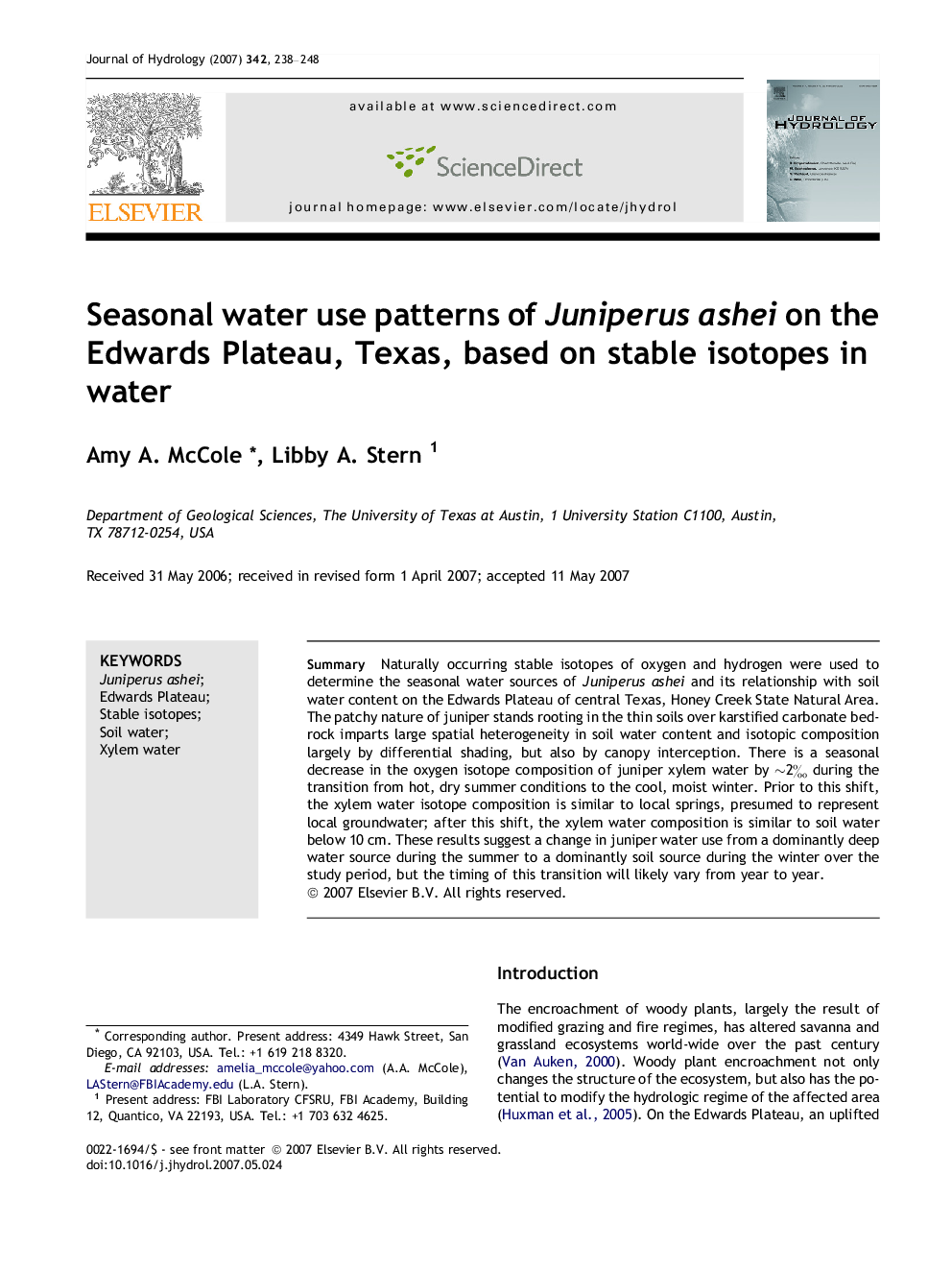| Article ID | Journal | Published Year | Pages | File Type |
|---|---|---|---|---|
| 4579777 | Journal of Hydrology | 2007 | 11 Pages |
SummaryNaturally occurring stable isotopes of oxygen and hydrogen were used to determine the seasonal water sources of Juniperus ashei and its relationship with soil water content on the Edwards Plateau of central Texas, Honey Creek State Natural Area. The patchy nature of juniper stands rooting in the thin soils over karstified carbonate bedrock imparts large spatial heterogeneity in soil water content and isotopic composition largely by differential shading, but also by canopy interception. There is a seasonal decrease in the oxygen isotope composition of juniper xylem water by ∼2‰ during the transition from hot, dry summer conditions to the cool, moist winter. Prior to this shift, the xylem water isotope composition is similar to local springs, presumed to represent local groundwater; after this shift, the xylem water composition is similar to soil water below 10 cm. These results suggest a change in juniper water use from a dominantly deep water source during the summer to a dominantly soil source during the winter over the study period, but the timing of this transition will likely vary from year to year.
